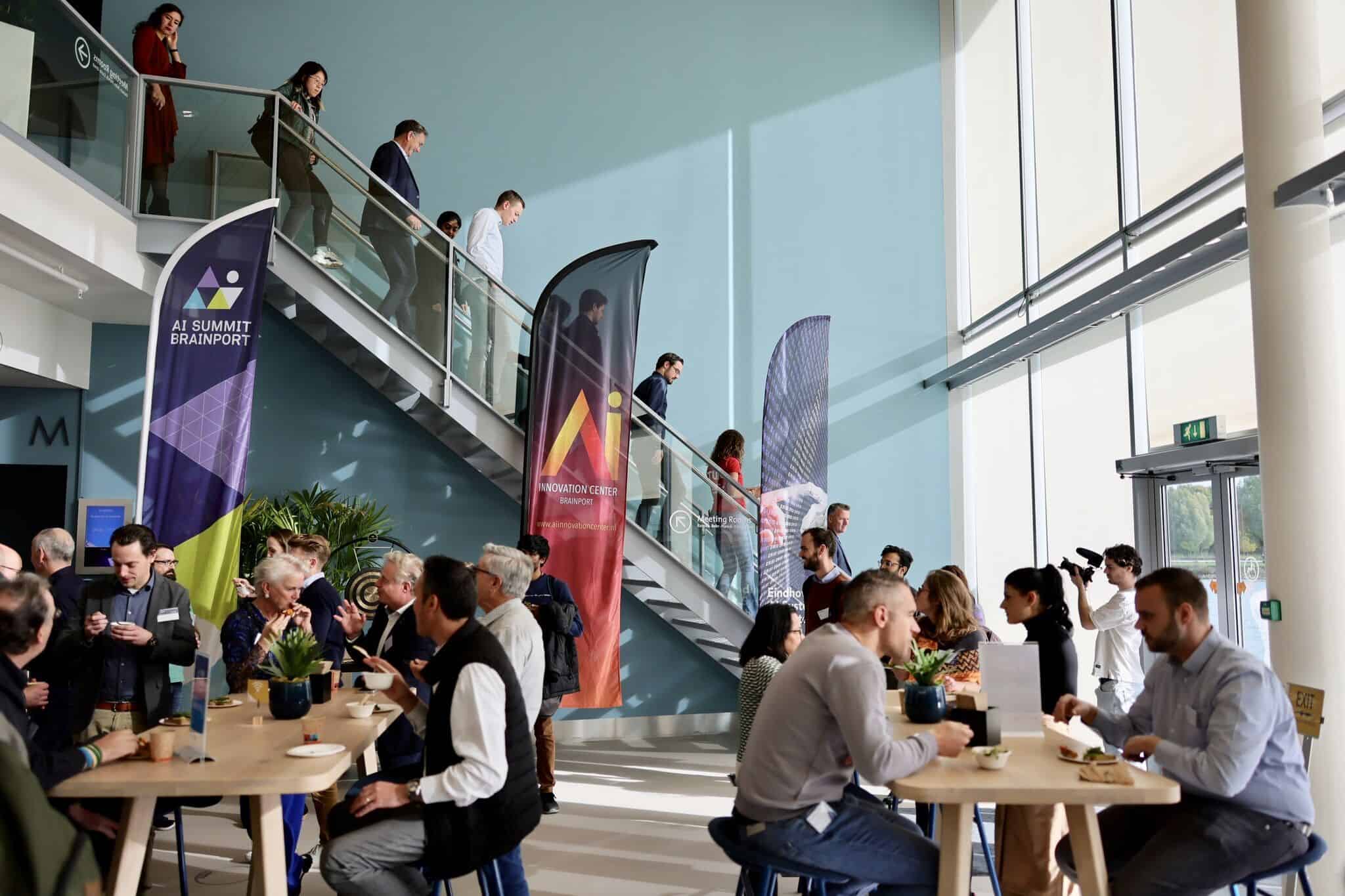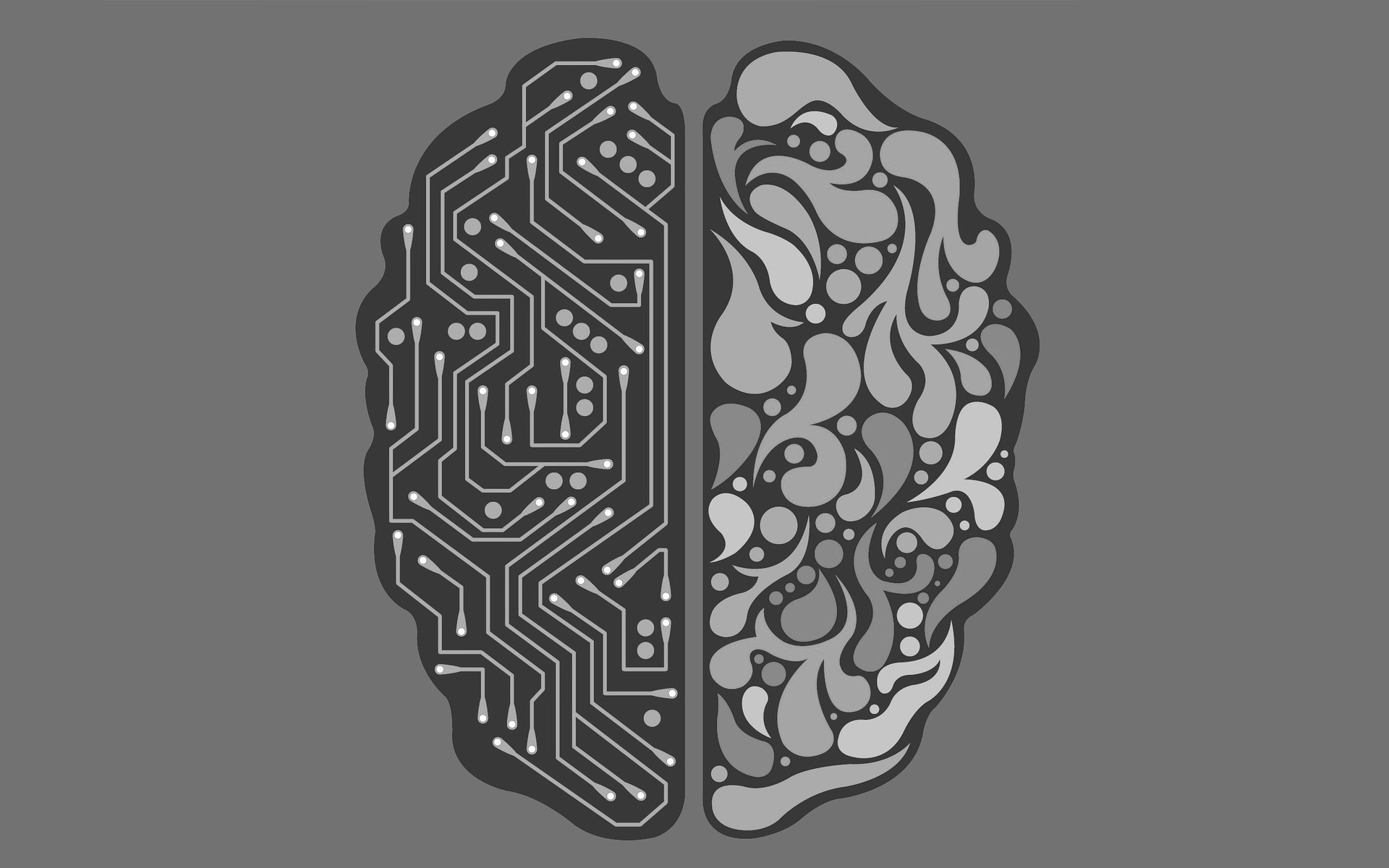
The first edition of the AI Summit Brainport in Eindhoven was dedicated to (regional) cooperation. AI (Artificial Intelligence) systems are set to play an increasingly more important role in industry. Although, before you can startrolling out AI further, you first have to overcome a lot of obstacles. The AI Summit is organized by EASI in cooperation with the AI Innovation Center, the Province of North Brabant and other partners of AI hub Brainport. During the conference, researchers, professionals and AI enthusiasts come together to share and expand their AI knowledge and skills.
“In the beginning, machines helped our arms and legs. Nowadays, they help our brains.” With those words on 3 Nov, 2022 Carlo van de Weijer, director of the Eindhoven AI System Institute, opened the AI Summit Brainport.
He also issued a warning. “AI is growing exponentially. When we were leaders in the glass tubing industry, we didn’t stand idly by. We need to do the same now.” There is therefore a sense of urgency now in developing and implementing AI.
Patient data and privacy
During the opening of the conference, Ymke de Jong, program manager of data & AI at Phillips, offered some insight into the obstacles involved in implementing AI in healthcare. De Jong expects that by 2025, data in healthcare will increase at a rate of 36 percent year on year. The quote “We are drowning in information, while starving for wisdom” is displayed on the screen during the presentation. These are the famed words of biologist E.O Wilson.
Digital transformation is driving the exponential growth of data in healthcare. Yet this data is by no means always available to AI systems. According to De Jong, it is precisely AI systems that are able to provide solutions to gain more insight into all of this data. To that end, cooperation within the region is key, because “AI is a team sport.”
“Right now, there are only a handful of AI systems in healthcare, and the impact on patient care has been modest so far. We are really good at coming up with software, but not so great at putting it into practice. That’s because we only have small and limited datasets at our disposal. That is why I am so pleased that there is now a movement to make more and more data publicly available.”

Federated learning
One of the main issues that crops up is patient privacy. Data is needed to train an AI algorithm, but without the consent of the patient, the data is simply not allowed to be used. De Jong cites two solutions during her keynote speech that ought to protect patient privacy.
As such, ‘Federated Learning‘ would provide a solution. In this, the data is not sent out, but remains in the same place. Instead, a party downloads the AI model through a central system then trains it with the available data. Once this is done, the model is sent back and another party can work with it. This continues until the AI model has been trained to a sufficient level. Another way AI can be trained without invading privacy is by using synthetic data. “It is not real data, but resembles the original data. In effect, the structure of the data remains the same.”
AI in the cucumber patch
Albert van Breemen, CEO and CTA of AI engineering company VBTI, has more than 30 years of experience with AI under his belt. He recently won a Gerard & Anton Award for his software platform, which is based on Deep Learning (DL) solutions, for companies working in the agricultural sector. In his view, smart software is not as such a new phenomenon. It already began in the 1950s when researchers started looking into how to program computers to think like humans.
“They then started talking to experts and presented them with problems. Out of that came ‘if-this-then-that‘ kinds of solutions. Then in the 1990s, the first algorithms were invented and now, thanks to the sheer computational power of computers, we are able to do some really great things with that. This is what Deep Learning is all about. A new development that allows us to build machines that were impossible seven years ago.”
During the conference, Breemen will recount his experiences in implementing AI in industrial applications. For instance, he started a collaboration with VDL in 2020 to create a visual system for a robot that trims leaves off cucumber plants, but does not interfere with the vegetable itself. Breemen then shows a picture of what one such greenhouse with cucumber plants looks like. The leaves and plants crisscross through each other. “I call this a visual jungle. This is so hard to do, this is something you have to use Deep Learning for.”

The project has been running for two years now. Breemen is only now beginning to see some really nice results. “An 80 percent success rate is easily achievable, but this robot will need to clip a thousand leaves per hour, 8 hours per day for 180 days per season. In that amount of time, the robot is only allowed to make a maximum of 5 mistakes. That’s 5 out of 1.5 million. To reach that level, you have to have more data to train the model. That’s the tricky part.”
“At first, we thought that the creation of AI software was a simple linear process. You train an AI system and then you have a model that is primed and ready to give to a robot, but how wrong we were,” Breemen explains. “Nothing could be further from the truth. You have to keep training the system for every slight change, such as what light is used.”
According to him, the creation of AI systems is actually a continuous process. “Customers should therefore see AI as a service and not as a product. We need to keep collecting data to perfect the AI model and make it so that it can also be applied to other situations.”
“One aspect that cannot be missing from this concept – you need a diverse and good team with several types of engineers and AI specialists who all work well together.”

